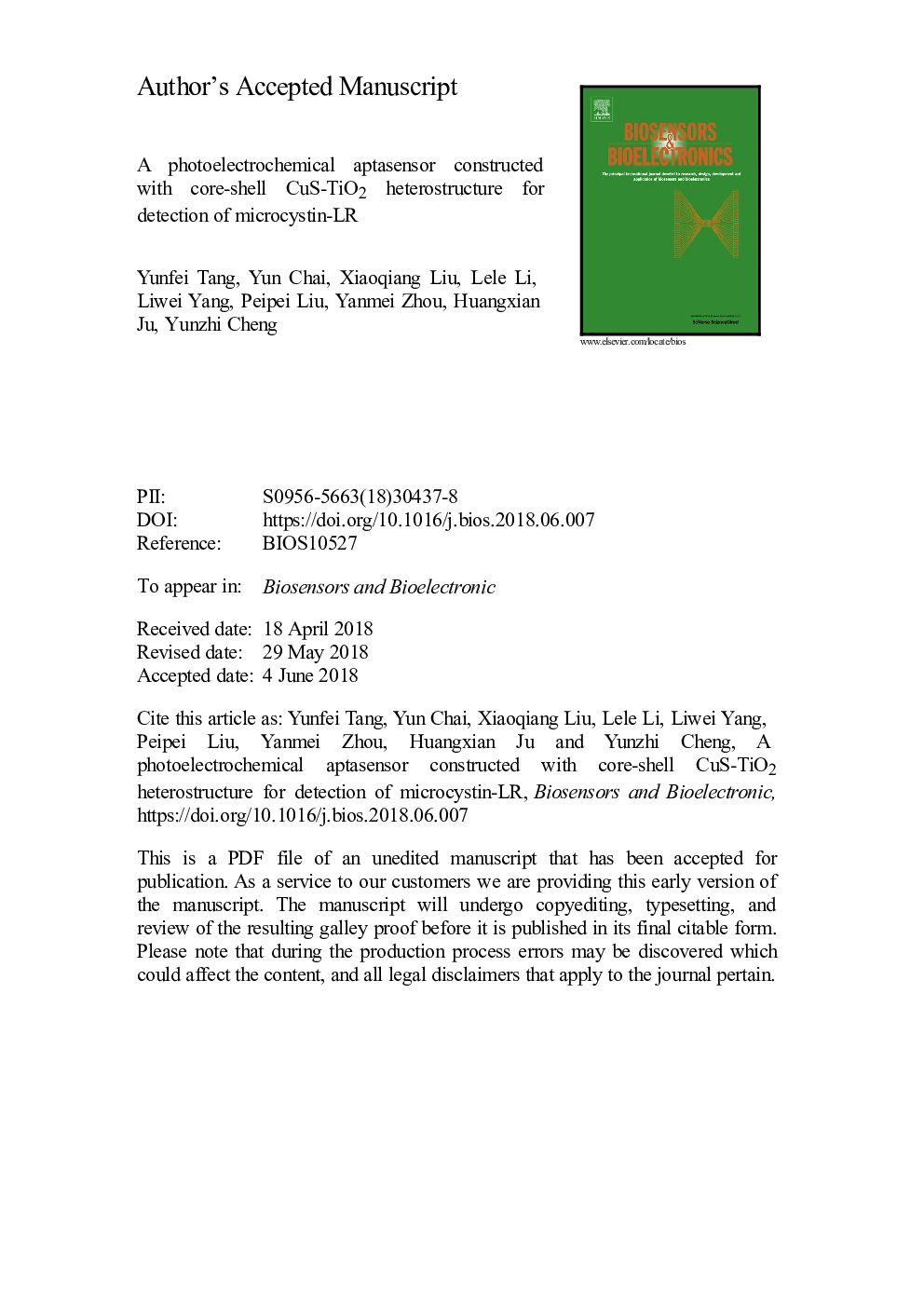| Article ID | Journal | Published Year | Pages | File Type |
|---|---|---|---|---|
| 7229018 | Biosensors and Bioelectronics | 2018 | 25 Pages |
Abstract
In this work, a CuS-TiO2 heterojunction composite was prepared by dispersedly depositing CuS nanoparticles on TiO2 nanospheres surface with a hydrothermal method, and was then used to construct a photoelectrochemical (PEC) aptasensor for sensitive detection of microcystin-LR (MC-LR) in aquatic environment. The energy bands of CuS nanoparticles and spherical anatase TiO2 were well matched, which enhanced the photo-to-current conversion efficiency. The composite exhibited the enhanced visible light absorption, the improved separation of photo-generated charges, and the reduced self-aggregation of CuS nanoparticles, leading to the enhanced photocurrent response. The PEC aptasensor was constructed by immobilizing CuS-TiO2 composite on ITO electrode with chitosan film that further covalently bound aminated aptamer. After the target, microcystin-LR (MC-LR) as an analyte model, was captured by the aptamer on the aptasensor, it could be oxidized by the photo-generated hole to impede the electron-hole recombination and further amplify the photocurrent. The PEC aptasensor showed superior analytical performance for MC-LR with a linear range of 5.0â¯Ãâ¯10â5 nM to 250â¯nM and a detection limit of 2.0â¯Ãâ¯10â5 nM. The detection results with the aptasensor for practical water samples indicated its promising application in environmental monitoring.
Related Topics
Physical Sciences and Engineering
Chemistry
Analytical Chemistry
Authors
Yunfei Tang, Yun Chai, Xiaoqiang Liu, Lele Li, Liwei Yang, Peipei Liu, Yanmei Zhou, Huangxian Ju, Yunzhi Cheng,
